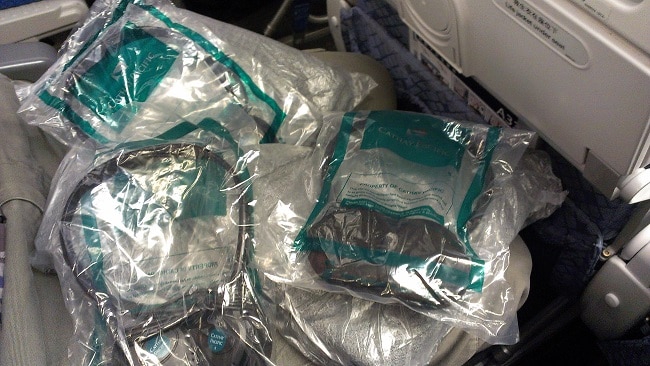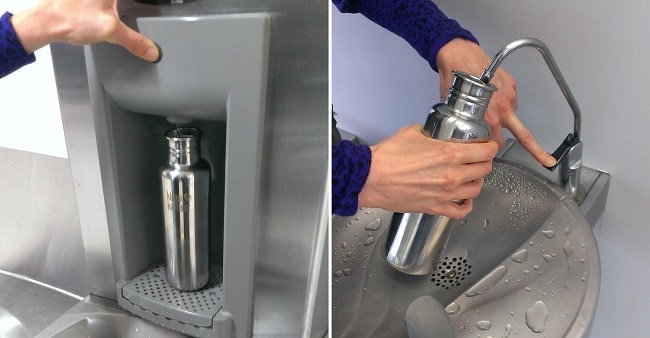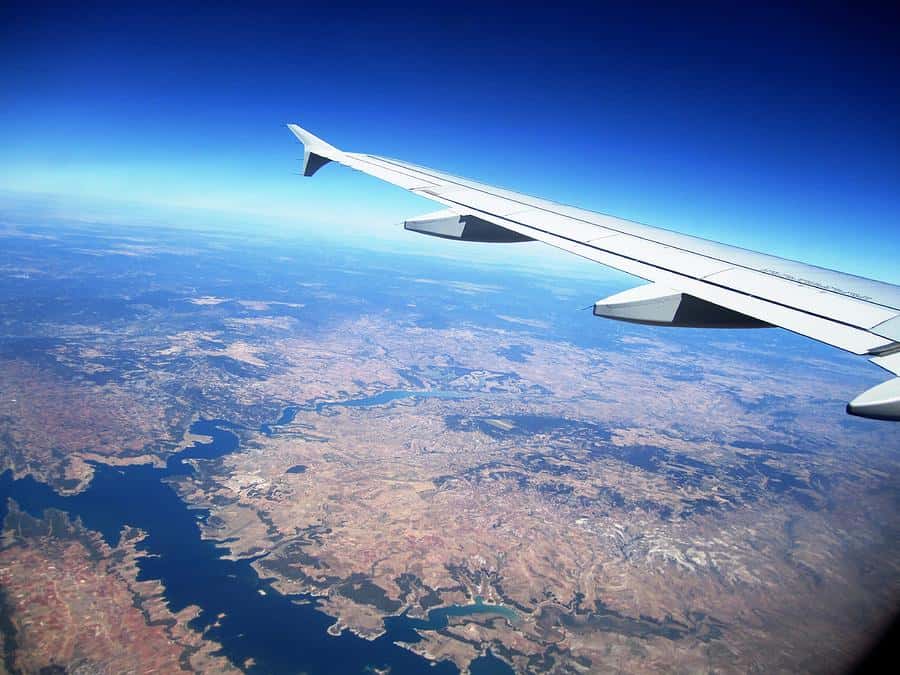How To Fly Plastic-Free (as Much as Possible)
On Tuesday night I flew from Perth, Australia to London, England to see friends and family and spend some time back in the motherland. It’s a 21 hour flight (divided into two parts – 7 hours from Perth to Hong Kong, and 12 hours from Hong Kong to London). Flying is bad for the environment, we all agree – but I was determined not to add to the huge carbon cost by generating a huge amount of waste too. The question is – is it even possible to fly waste-free?
Despite my best efforts, I still probably produced more waste in those 21 hours than I’ve generated in the entire rest of the year. But there’s definitely things you can do to keep your waste down.
Preparation – What To Think About
With flying, trying to minimise your waste can be managed in two parts. Firstly, there’s all the things that you can do before you get to the airport. Like with all zero-waste and plastic-free habits, success comes with planning. Thinking about things to bring that will reduce reliance on single-use plastic, or avoid any other unnecessary packaging. Anything that you can bring of your own will produce the need to use a plastic-wrapped version on the plane. Think cutlery, cups, water bottles, headphones, blankets, a pillow, thick socks, a toothbrush…if there is something you know you’ll need or want, it’s best to bring it with you.
Secondly, there’s the choices you make once your strapped into your seat. If you’ve had to accept something made of plastic, is it possible to re-use it to get as much life out of it as possible? Can you even make choices that use less plastic, or create less waste?

Plastic-wrapped headphones and plastic-wrapped blankets awaiting our arrival on our seats – fortunately we were able to return these as we had brought our own!
What to Wear – Keeping Comfortable (and Warm)
It doesn’t matter how hot it’s going to be at your destination, or how hot it is at your departure point, it is going to be freezing on that plane once the air conditioning is cranked up to maximum. You may be really excited you’re headed to the beach, but that’s no excuse to wear skimpy shorts and flip-flops on the plane. You. Will. Freeze. Once you’re cold, you’ll be reaching for those single-use airline socks, and the plastic-wrapped blanket; your best intentions to keep the unnecessary waste at bay will be long gone.
Pack a thick pair of socks, leggings or long trousers, and a warm jumper. A scarf is useful and can double up as a pillow or second blanket. If you have space, take your own blanket and pillow too.
Headphones
Airline headphones usually have that weird double pin adapter, so you can’t plug your own headphones into the jack. Except, you can. It’s possible to buy these adaptors for just a couple of dollars. When ordering mine, I was concerned that they might arrive wrapped in plastic, so was delighted when they arrived with minimal packaging. I was less delighted when I got on the plane and found I didn’t need it for these flights – the airline had standard headphone jacks!

These 2-pin headphone jacks mean I no longer have to use airline headphones which are packaged in plastic, and have foam earpieces which are thrown away after just a single use.
If you don’t want to buy an adaptor, or leave it behind, don’t hand the headphones you are given back at the end of the flight. Keep them for any other legs, and the return journey, and hand them in when you’re back home. Before I got a headphone adapter I’d do this – it reduced the number of headsets I used from 4 to 1. As each headset is packaged in plastic, that saves three plastic bags, as well as 6 replacement fuzzy ear bits (they are replaced after each use).
Food
Did you know you can take your own food onto the plane? Most flights will let you bring your own food; you just might not get it off the plane and through customs at the other end. What effort you want to go to is up to you, but if you can bring your own snacks it will mean not needing to eat those tiny packets of peanuts, or other plastic-wrapped snacks that will probably make you feel stodgy and unhealthy anyway.
Yes, your flight was probably expensive. But trying to recoup some of the cost by eating 27 packets of peanuts won’t really cut it. Honestly.
As for meals, if you have the choice to not order the meal (if you are on a charter flight), don’t. Anything you bring from home will taste better and be far more nutritious. But commercial flights often don’t give you the option, and you can’t phone up and cancel your meal. If you refuse your meal on the plane, it will go in the bin. I generally do eat the plane meals, particularly anything “fresh” (you know what I mean!), but I hand back the long-life stuff in the hope it will get passed to someone else.
Drinks – Bring Your Own Water Bottle (and a KeepCup!)
You can’t take bottled water through customs, but you can take reusable water bottles through, provided they are empty. What’s more, once you are through customs, many airports offer filtered water for refilling your bottles, so you can get on the plane with a full bottle of water. At the three airports I travelled through (In Perth, Hong Kong and London Heathrow), all had free water bottle refilling stations.

Water bottle refills are available after security at most airports meaning if you bring your own bottle, there’s no need for single-use plastic cups on the flight!
Once your on the plane, you can hand your empty bottle to a steward and ask them to refill it for you.
If you really want to avoid waste on the plane, just stick to drinking water rather than individual serves of spirits, soft drinks, juice and other alcohol. Bring a KeepCup for tea or coffee.
Toiletries
Current rules for international flights state that if you want to take your toiletries onto the plane, they have to be presented in a clear, resealable plastic bag. The most obvious way to avoid this is to check your toiletries in by placing them in hold luggage. If this isn’t an option for you, and you’re travelling with others, sharing will reduce the number of bags needed. If you do need to take a bag, keep it so you can reuse it when you next fly – just store it with your passport so you don’t forget!
Duty-Free
Duty-free generally means excessive packaging, but if you’re thinking you’ll pick up a couple of (glass) bottles of duty-free alcohol, many airports now insist that this is packaged in sealed plastic bags for security purposes. On top of that, the glass bottles are often packaged with foam nets, which is also made from plastic. If you’ve gone somewhere and want to bring some of the local tipple home, buy it before you fly at a local store and pack it in your hold luggage – you may even find it is cheaper than the inflated airport prices. Just remember to check the customs restrictions for your destination!
Do you have any tips for travelling plastic- and waste-free? Is there anything else you’d add to this list? Or do you find it’s easier to suspend your waste ideals for the holidays? Please leave a comment, I’d love to hear what you think!
[leadpages_leadbox leadbox_id=1429a0746639c5] [/leadpages_leadbox]




